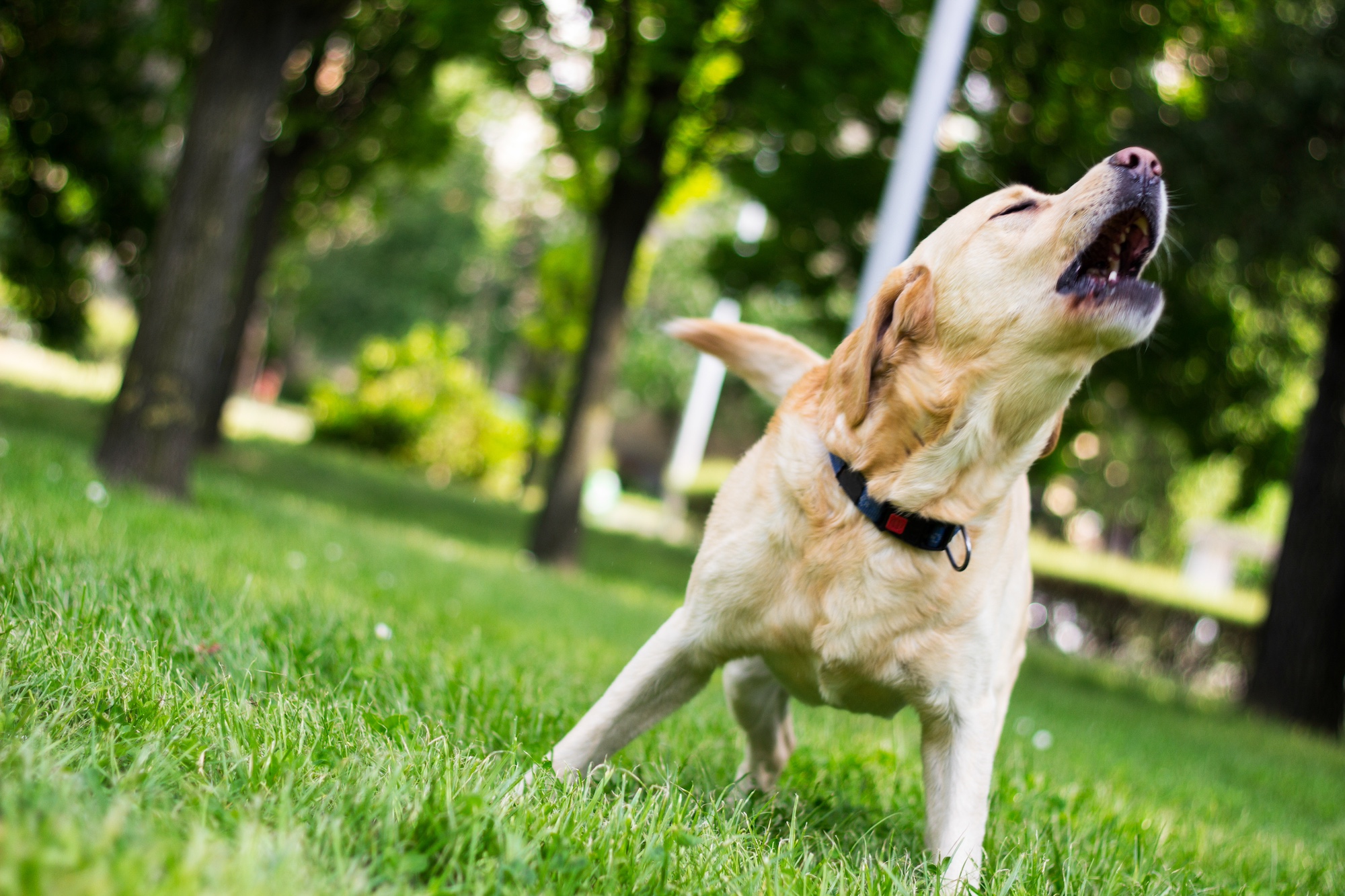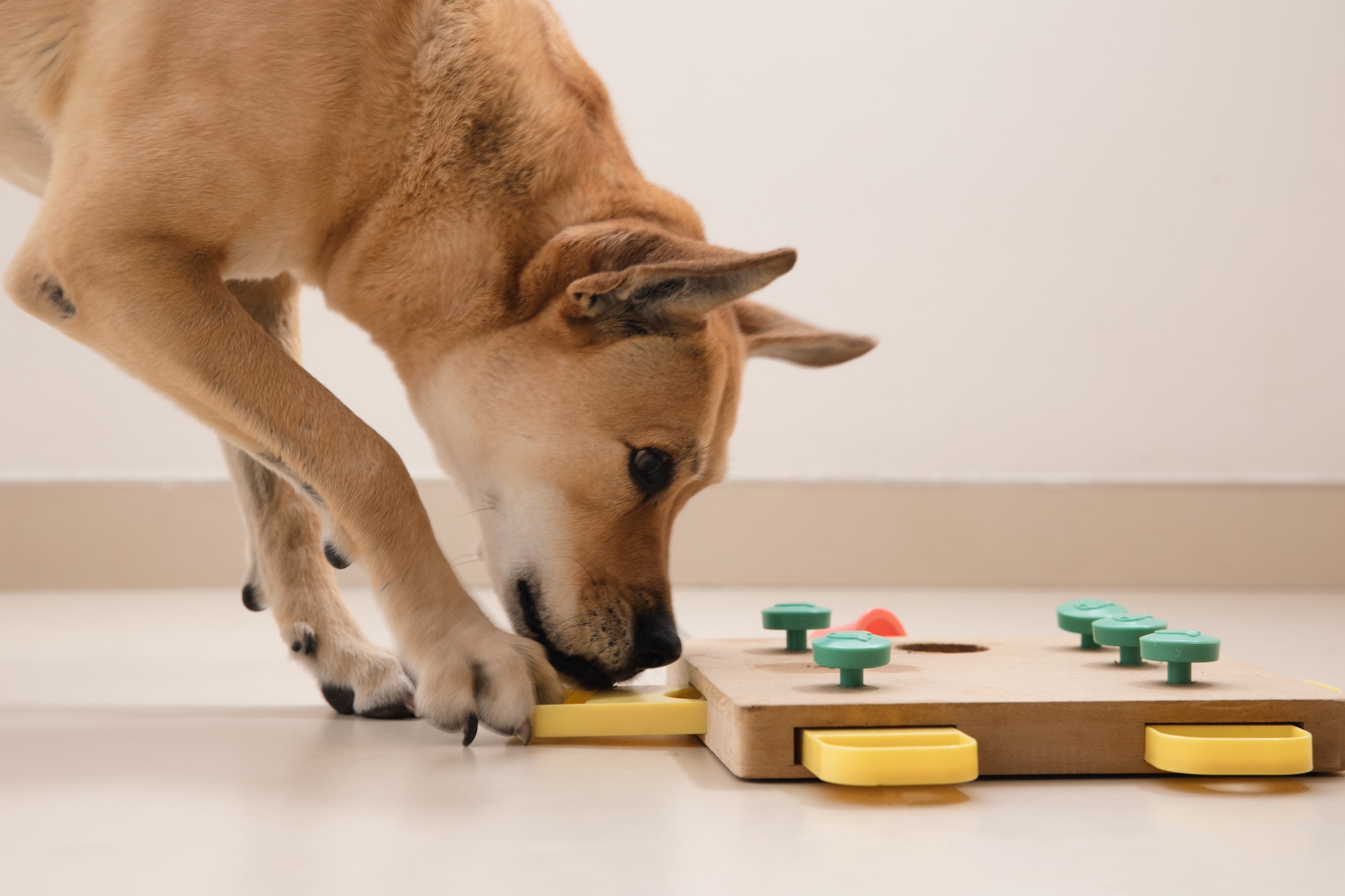The Farmer’s Dog customer CJ asks: “My dog is usually wonderful, but when someone approaches—even when I know the person—she thinks she has to protect me. How do I rid her of that feeling?”
Dear CJ:
It’s hard to know exactly which course of action is best for you without more specifics about what your dog is doing when people approach—but it’s common for humans to feel like their dogs are being overprotective, and experts have tips that can help point you in the right direction. Before we get into the details, here are some of their key takeaways:
- If your dog is behaving in a way that puts them or any other living thing at risk, call in a qualified trainer to help.
- Your dog might not be acting protective. It’s possible, for example, that they’re afraid or anxious.
- Still, dogs can sometimes guard people. And many of the steps you’d use to train a dog who’s guarding you are similar to those you’d use for a dog who’s afraid of certain people or animals.
- Generally speaking, desensitization and counterconditioning are often useful in reducing behaviors that seem overprotective.
- Don’t punish your dog for “overprotective” behavior, as this can make them more likely to react badly when people or animals approach.
Having said that, here are some ways you can start to address a dog’s behavior if you think they’ve become too protective.

Remember: Your dog is not being “bad”
When we spoke to Dr. Zazie Todd, a psychologist and certified dog trainer, about helping anxious, fearful, and reactive dogs, she emphasized the importance of recognizing that they are not being bad; they are feeling bad. This doesn’t mean that it’s okay to ignore behavior that’s dangerous to the dog and others—you have to address it. But don’t punish them for it. Instead, take their perspective and go at their pace as you try to teach them that it’s good news when people come around.
There are all sorts of reasons dogs can act protective—some of them are evolutionary, and others have to do with their upbringing. As for why dogs and other animals are protective in the wild, Dr. Marc Bekoff, ethologist and author of The Emotional Lives of Animals, says there’s not just one explanation. “Obvious factors,” he says, “would be protecting themselves, family members, friends, or other group members from danger. But it’s critical to consider context—who the individual is, who else is around, where the behavior is taking place—when assigning a label such as ‘protective.’”
Speaking of which…
Identify the behavior, and when it’s happening
Farrah Branson, Animal Training Manager at Seattle Humane, says the first step if you think your dog is acting overprotective is to identify what the behavior is and when it’s happening. She recommends keeping a written record of these incidents.
Is your dog barking? Growling? Is the behavior arising when someone enters your house, or if a dog approaches on a walk? These details matter as you try to figure out the problem and a solution. And, Branson emphasizes, reactions that humans think are about a dog being overprotective can actually have other causes. “A lot of times,” she says, “it’s more seeking comfort, or fear-based.”
Watch your dog’s body language and take note of when they show signs that they’re upset. Then you’ll know which triggers to address.

Move your dog away and change the subject
It can help to use skills your dog already has to give them something else to think about and move them away from whoever is worrying them. Branson suggests using cues like “touch” or “focus on me” if your dog is under threshold—meaning that they notice the stimulus without reacting to it.
At home, if your dog knows how to settle in “their place,” and has good impulse control, you can ask them to go there. Especially if they have something fun to chew on or play with, they may be perfectly content to do so. Just make sure that your dog’s spot really is theirs—no one should bother them there.
These are not skills to teach your dog when they’re already upset that they’re encountering someone out in the world or that someone is entering your home—you need to set the foundation first.
While every trained dog knows “sit,” Branson warns against resorting to it in situations where a dog is acting scared or protective. She prefers “touch” or “focus on me” because you can use those to move them away from whatever they don’t like. “Teaching them to figure out a way to move their body away and get out of situations,” she says, “is super powerful.”
Sitting, on the other hand, might mean staying put near something that scares them.
“It is my goal to always be my dog’s safe harbor,” she says. “I look at my dog, and I’m like, ‘Are you showing me signs that you’re uncomfortable? How can we reposition? How can we change what’s happening in this situation?’”
When you’re in calm, happy moments, it’s worthwhile to build up your dog’s skill set. Give them physical and mental exercise, and lots of positive experiences. Play, training sessions, nosework, and the like can all yield benefits. This can make them more confident and resilient in the long run, and give you more options if something unexpected happens.

Manage your dog’s environment
One thing you can do if your dog is reacting when you’re approached by people and other dogs is to reduce the frequency with which they encounter those situations.
You can tell people that your dog doesn’t like to be petted or approached, for example.
The details can matter, too. A dog who’s fine saying hello under certain circumstances might find other situations difficult. Branson discusses the difference between a dog being able to walk away, being restrained by a leash, or being held up to someone: “A dog is going to be a whole lot more comfortable saying hi to a new person,” she says, “if they can get away from the person—if they’re uncomfortable and they can choose the proximity they put their body in—than if they’re on a leash and forced to engage with somebody. And then, the even higher level is: I’m up off the ground. I’m being thrust into somebody and I have zero power and choice.”
At home, if someone is visiting for a moment, you can keep your dog safely behind a gate or in a separate room.
Use desensitization and counterconditioning
You can try to use desensitization and counterconditioning to reduce a dog’s apparently protective behavior. Desensitization means getting the dog used to the stimulus at a very low level that doesn’t upset them and slowly increasing it as their tolerance grows; counterconditioning means pairing every appearance of the stimulus with a reward—like a tasty treat—so that the dog associates it with good things. This can be quite effective in helping dogs accept others getting close to them and you, but only if you start from a distance when they’re under threshold.
If your dog doesn’t like when people get too close on walks, feed them a treat at the moment they notice someone in the distance, but before they show signs of stress. “That could be every time you see a human, you’re giving them a treat,” Branson says, “making it ‘see human, eat treat; see human closer, eat treat; see human closer, eat treat.’”
But let your dog set the pace—only get closer if they’re not showing any signs of stress. If you’re not confident that you can read your dog’s stress signals, that’s another reason to bring in a qualified trainer.
And resist the temptation to let a stranger give your dog a treat if they’re nervous around new people—because that forces them to choose between the treat and someone they find scary. That’s a dilemma. And, Branson, says, “people get bitten in dilemmas.”
Don’t punish your dog
If you punish your dog when they react to a stranger approaching, it won’t teach them that they shouldn’t react. It’s more likely to teach them that when strangers appear, bad things happen to them. But if you present your dog with steak whenever they see someone at a distance, before they get upset, the opposite happens. “I generally believe that humans are steak-producing,” Branson says of a dog who’s received these treats, “and that seeing them produces a happy result… the immediate consequences are important.”
Take your dog’s feelings seriously
When we wrote about research revealing that dogs can smell humans’ stress—and act more cautiously as a result—it was more evidence that dogs often perceive things that we humans cannot. As one of the study’s authors, Dr. Zoe Parr-Cortes, told us, “their noses are their primary sources of information.”
So maybe you can’t see or hear anything amiss—that doesn’t mean your dog is imagining things. Assume that your dog has their reasons, and do what you can to make them feel better.
“I know that my dog would protect me if I needed him to,” Branson says. But he understands that, in day-to-day life, she doesn’t need him to. And the key there is making sure he feels secure. He knows the people coming through their door are not threats. “I’m always going to vet them to make sure they’re not a vampire,” she says of her message to her dog. “So don’t worry about it.”









